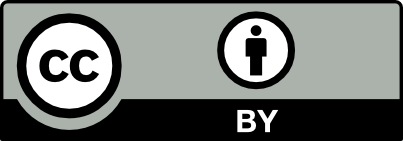Intensification of cellulose enzymatic hydrolysis by microwave pretreatment
DOI:
https://doi.org/10.14232/analecta.2020.1.89-99Keywords:
microwave pre-treatment, cellulose, enzymatic hydrolysis, enzymatic saccharificationAbstract
A significant representative of the third generation of raw materials is waste containing hemicellulose. Agriculture and the food industry generate a great deal of this type of waste, which has many potential opportunities for processing. Our research group investigated the pre-treatments for the enzymatic saccharification of the cellulose content of the two fractions of corn cob meal. Microwave energy communication was performed in both acidic and alkaline media. It was found that the pH of the medium influences the amount of reducing sugars, but to an almost equal extent. The yield is also significantly dependent on the starting material and the concentration of the suspension.
Downloads
References
V. Balan, “Current Challenges in Commercially Producing Biofuels from Lignocellulosic Biomass”, ISRN Biotechnology, 2014, 1-31, 2014.
S. Ethaib, R. Omar, M. Mazlina, A. Radiah, S. Syafiie, and M. Y. Harun, “Effect of Microwave-assisted Acid or Alkali Pretreatment on Sugar Release from Dragon Fruit Foliage”, International Food Research Journal 23(Suppl): S149-S154, December 2016.
J. Fan, M.D. Bruyn, Z. Zhu, V. Budarin, M. Gronnow, L.D. Gomez, J. Clark, “Microwave-enhanced Formation of Glucose from Cellulosic Waste”, Chemical Engineering and Processing: Process Intensification, 71, 37-42. doi:10.1016/j.cep.2013.01.004, 2013
J. Xu, H. Chen, Z. Kádár, A.B. Thomsen, J.E.Schmidt, H. Peng , “Optimization of Microwave Pretreatment on Wheat Straw for Ethanol Production”, Biomass and Bioenergy, 35(9), 3859-3864. doi:10.1016/j.biombioe.2011.04.054, 2011.
Somerville, C., Bauer, S., Brininstool, G., Facette, M., Hamann, T., Milne, J., Vorwerk, S. Toward a systems approach to understanding plant cell walls. Science, 306(5705), 2206-2211, 2004.
Z. Zhang, A. A. Donaldson, and X. Ma, “Advancements and Future Directions in Enzyme Technology for Biomass Conversion,” Biotechnology Advances, vol. 30, no. 4, pp. 913–919, 2012.
V. K. Gupta, C. P. Kubicek, J. Berrin, D. W. Wilson, M. Couturier, A.,Berlin, T. Ezeji, “Fungal Enzymes for Bio-Products from Sustainable and Waste Biomass,” Trends in Biochemical Sciences, 41(7), 633-645. doi:10.1016/j.tibs.2016.04.006, 2016
A. Nath, “Michaelis-Menten Kinetics and Briggs-Haldane Kinetics”, Departments of Medicinal Chemistry and Pharmaceutics, University of Washington, December 2007, from http://depts.washington.edu/wmatkins/kinetics/michaelis-menten.html
N. Sturm, “Enzymes: Catalysis and Kinetics”, College of Medicine, University of Arizona, 2014, from
K. Ahern, “Enzymes - Basic Concepts and Kinetics”, Oregon State University, 2012, from http://oregonstate.edu/instruct/bb450/450material/lecture/enzymesoutline.html
K. S. Başkan, E. Tütem, E. Akyüz, S. Özen, R. Apak, “Spectrophotometric Total Reducing Sugars Assay Based on Cupric Reduction”, Talanta, 147, 162-168. doi:10.1016/j.talanta.2015.09.049, 2016.
B. Lemmer; Z, Jákói ; S, Beszédes ; G, Keszthelyi-Szabó ; C, Hodúr (2017) Microwave enhanced enzymatic hydrolysis of corncob residues In: Magó, László; Kurják, Zoltán; Szabó, István (szerk.) “SYNERGY - Engineering, Agriculture and Green Industry Innovation” : ABSTRACTS of the V. International Conference of CIGR Hungarian National Committee and the Szent István University, Faculty of Mechanical Engineering and the XXXVIII. R&D Conference of Hungarian Academy of Sciences, Committee of Agricultural and Biosystems Engineering, Gödöllő, Hungary, 16 – 19. October 2017.
Downloads
Published
How to Cite
Issue
Section
License
Copyright (C) 2024 Authors
This work is licensed under a Creative Commons Attribution 4.0 International License.













